After a long day spent in your garden pampering your plants, it's time to take care of yourself. How about a natural, homemade treatment to reward your efforts and revitalise your skin? In this tutorial, we will guide you in creating an oil macerate using lavender and chamomile. Two flowers with remarkable virtues: lavender for its relaxing power and chamomile for its soothing properties for the skin.
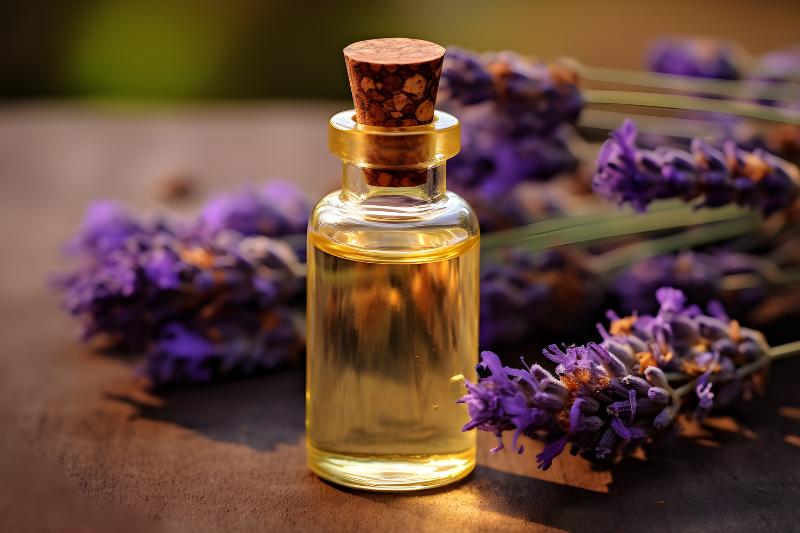
Why an oil macerate?
The oil macerate is an ancestral method for extracting the benefits of plants into a vegetable oil. Unlike essential oils, which require a complex distillation process, macerates are simple to prepare and gentle to use. They are essential allies for skincare, as well as for overall well-being. They allow you to incorporate the virtues of plants into your daily life in an easy and natural way.
The benefits of lavender and chamomile
Lavender
This iconic flower of our gardens does not just beautify our exteriors; it also has a place in our wellness routine. Among the varieties to favour, Lavandula angustifolia, also known as true lavender, is often recommended for its relaxing properties and its high-quality essential oil. It is frequently used in aromatherapy to combat stress and promote quality sleep. It is also believed to have antiseptic properties beneficial for the skin.
Chamomile
Matricaria recutita, or German chamomile, and Chamaemelum nobile, also known as Roman chamomile, are two varieties generally chosen for their soothing properties. Ideal for relieving skin irritations, they may facilitate cellular regeneration. These varieties are also appreciated for their potential anti-inflammatory effects and can be a good complement for treating various minor ailments.
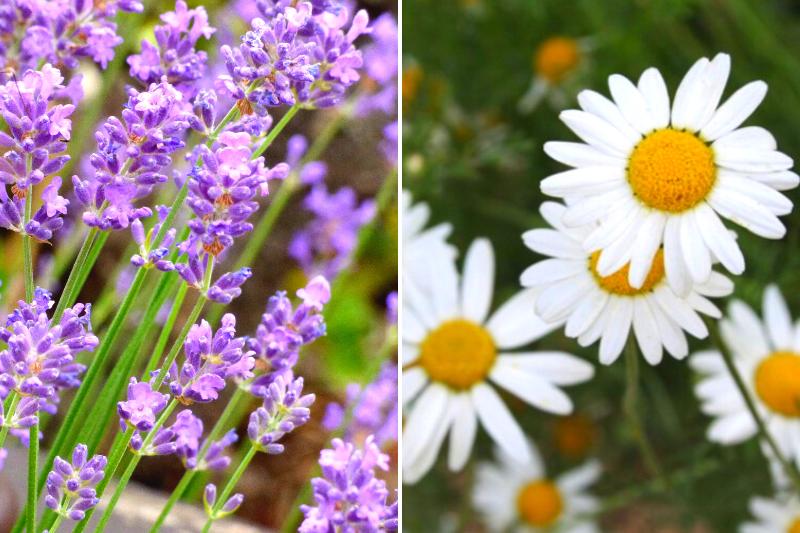
How to make your oil macerate?
Necessary equipment
To create your own oil macerate with lavender and chamomile flowers, here is the list of equipment and ingredients you will need for a 250 ml bottle:
- Lavender flowers (Lavandula angustifolia): about 10 to 15 g
- Chamomile flowers (Matricaria recutita or Chamaemelum nobile): about 10 to 15 g
- Vegetable oil of your choice (olive oil, jojoba oil, etc.), preferably organic: about 300 ml
- A sterilised glass jar with an airtight lid.
- A fine strainer or coffee filter for filtration.
- A label to mark the date and type of macerate.
- An opaque bottle.
For optimal results, we recommend choosing quality flowers and oils, organic if possible, to ensure a final product free from pesticides or chemicals.
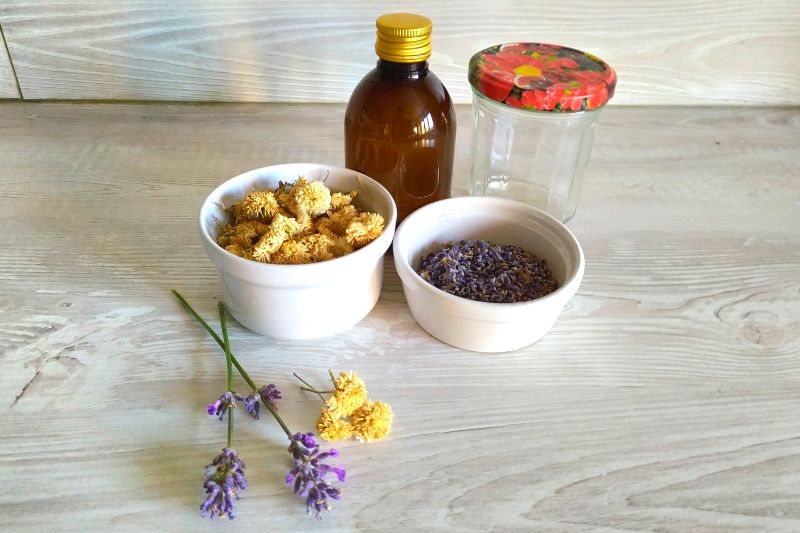
Preparation steps
Making an oil macerate with lavender and chamomile flowers is a simple process, but it requires a bit of patience. Here are the steps to follow:
1. Selecting and preparing the flowers
- Choose freshly picked lavender (Lavandula angustifolia) and chamomile (Matricaria recutita or Chamaemelum nobile) flowers for optimal results.
- Gently clean the flowers to remove any impurities.
- You can also use dried flowers.
2. Sterilising the containers
- Sterilise your glass jar and lid by immersing them in boiling water for 10 minutes.
- Let them air dry on a clean cloth.
3. Preparing the base oil
- Choose a vegetable oil suitable for your skin, such as olive oil or jojoba oil.
- Measure about 300 ml of oil in a separate container.
4. Maceration process
- Fill the sterilised jar with the lavender and chamomile flowers.
- Pour the vegetable oil over the flowers, ensuring they are completely covered.
- Seal the jar tightly and let it macerate in a warm, sunny place for 2 to 3 days, behind a window or on the terrace. An ambient temperature of 20-25°C is ideal.
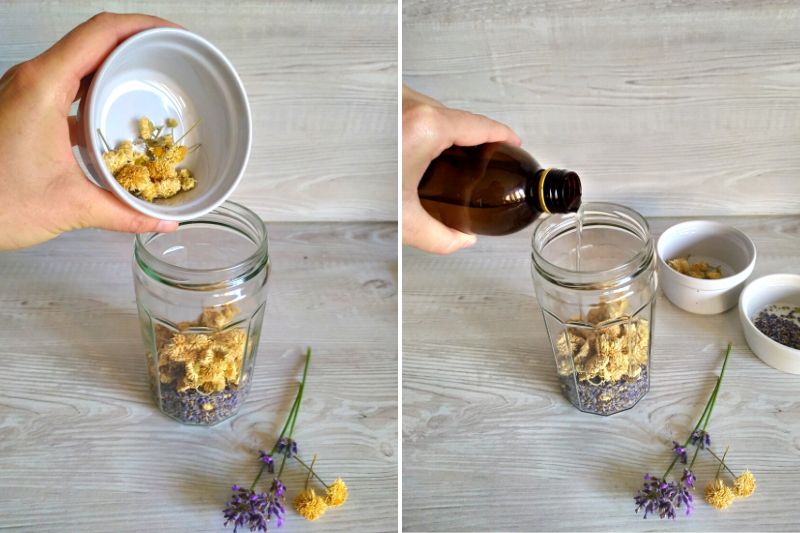
5. Heating and filtration
- Pour your mixture with the flowers into a heat-resistant container and gently heat in a bain-marie for 2 hours.
- Alternative: if you want to avoid cooking, you can let the mixture macerate for another 3 to 6 weeks, ensuring the flowers are fully submerged in the oil.
- Let it cool, then filter the oil using a fine strainer or coffee filter.
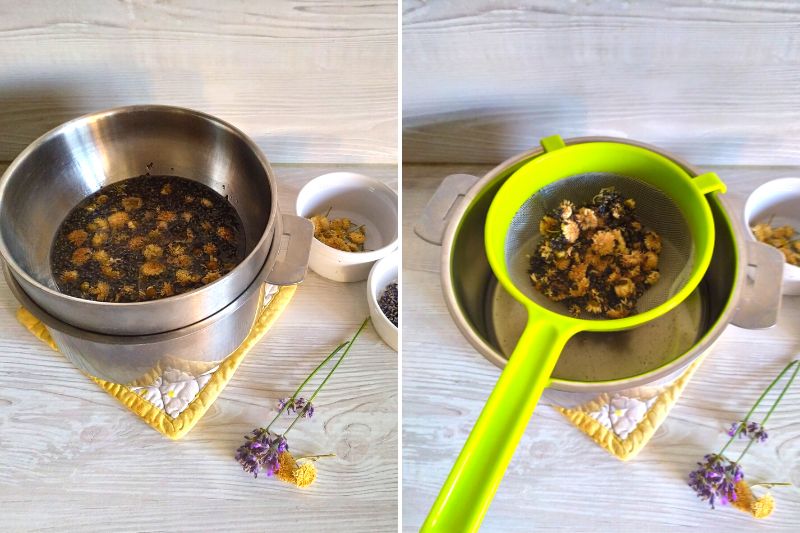
6. Filtration and Storage
- Transfer the oil into a clean opaque bottle, label it, and store it away from light and heat.
- Generally, a well-prepared and properly stored oil macerate can last between 6 months and a year. It is good to regularly check its appearance and smell. Be attentive to any changes in scent, colour, or the appearance of mould.
How to use the oil macerate?
Your oil macerate with lavender and chamomile flowers is a true treasure for well-being and skincare. Here are some ideas for use:
For the skin
- Apply a few drops to dry or irritated areas of the skin. The oil hydrates while the soothing properties of lavender and chamomile relieve discomfort.
For well-being
- Add a few drops to your bath for a relaxing effect at the end of the day. Ideal after a long day of gardening or outdoor activities.
As a massage oil
- Use it as a massage oil to relieve muscle tension, on your neck, back, or the soles of your feet. Its relaxing properties will work wonders.
In aromatherapy
- Place a few drops in an essential oil diffuser to benefit from the soothing effect of the flowers on your mood and environment.
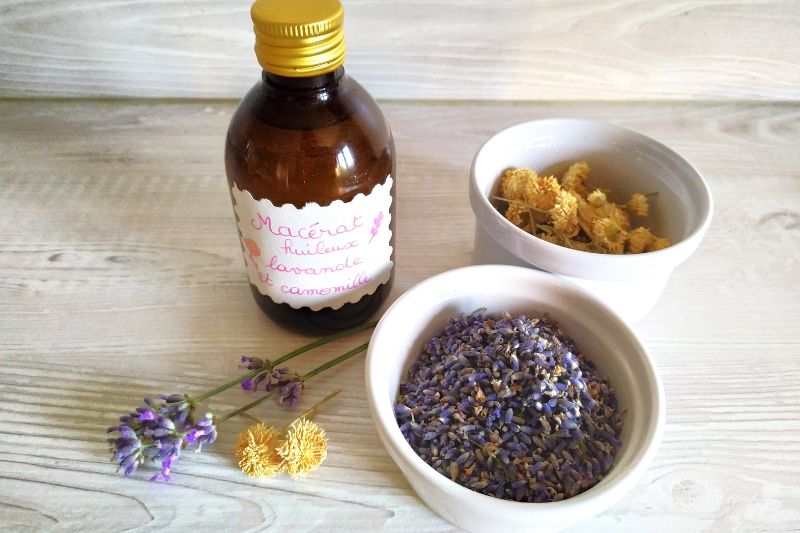
Tips and advice
To optimise your oil macerate production, here are some practical tips and advice:
Regular agitation
- For better extraction of the active compounds from the plants, remember to gently shake the jar every two or three days during the maceration period.
Choice of oil
- Some types of vegetable oil can provide complementary benefits. For example, apricot kernel oil is rich in vitamins and suitable for sensitive skin.
Labeling
- Don't forget to label your macerate with the preparation date and the ingredients used. This will help you track the product's shelf life and avoid any confusion.
Skin test
- Always perform a patch test on a small area of skin before wider use to ensure there is no allergic reaction.






























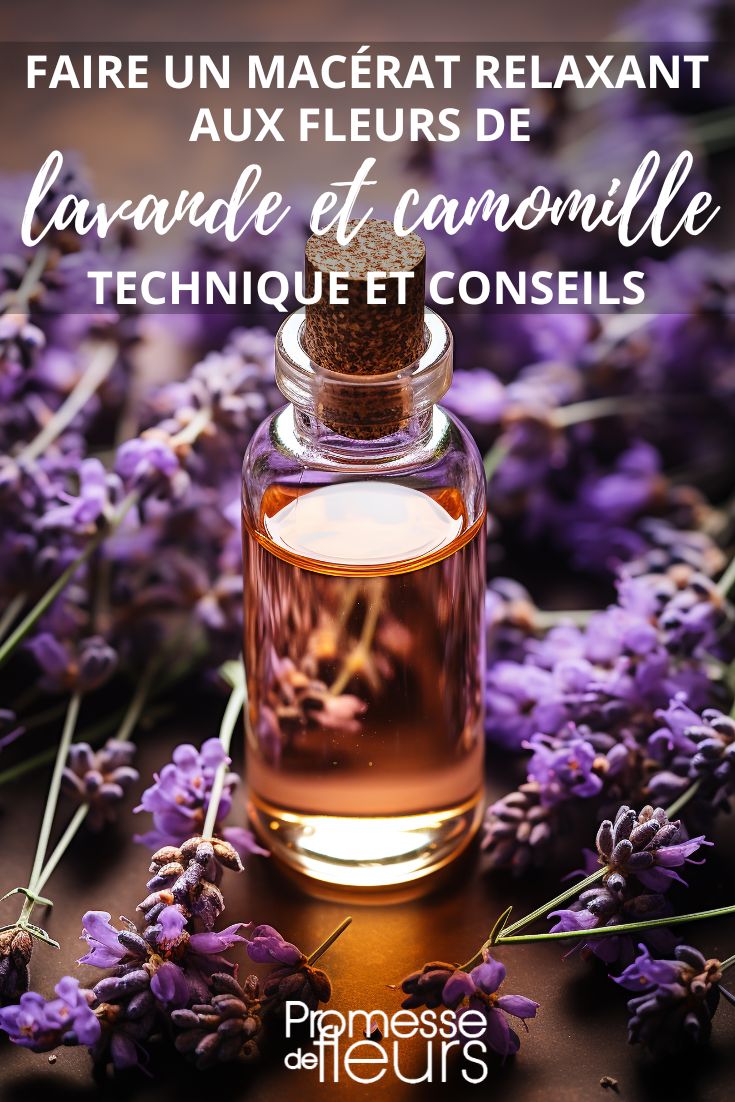
Comments